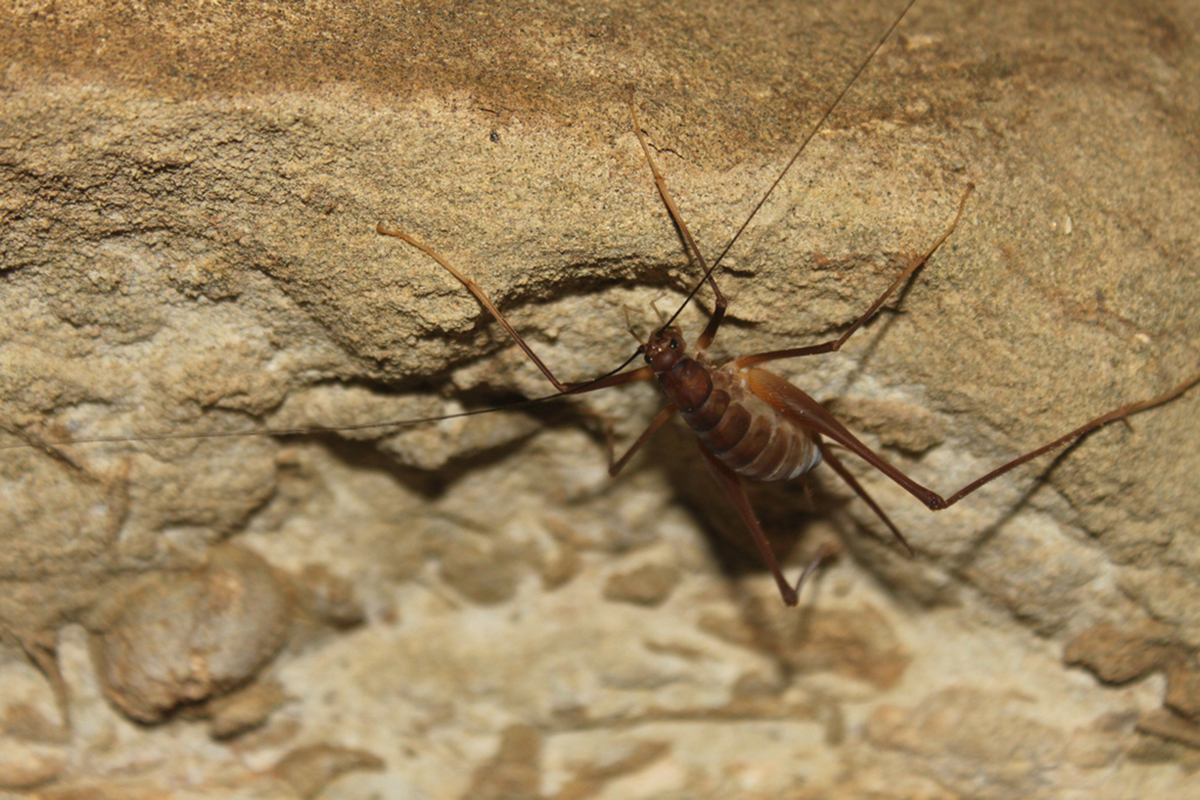Table of Contents
A spider cricket is a creepy pest many people would rush to call the pet control company to come out and exterminate. They are a literally "in your face" bug that can bite and spread disease.
For a few hundred dollars, you can get an exterminator to do a pest inspection and get rid of spider crickets. However, it's best to prevent the infestation before it starts with a few simple home pest control steps.
- It's important to seal doors, floors, and windows where spider crickets can come into your home. This is particularly important for basement windows and any windows next to flowers boxes. Any container of compost makes a good home for a spider cricket, especially in damp weather.
- Spider crickets don't like light. Keeping lights on drives them away. If you have a way to turn on the lights in crawl spaces, you can keep them out of your walls and cabinets. If not, some kind of in-closet and under-the-cabinet lighting also helps for getting rid of the bugs.

- Winter is the time spider crickets look for places to hibernate. In nature, they would gather in piles of debris. A stack of firewood is similarly attractive. Don't stack wood close to the house, and trim shrubs and trees so that they are not within jumping distance (up to a meter) of your house. A shrub can serve as a highway for bugs as temperatures begin to fall.
- It helps to get rid of clutter. Stacks of papers and magazines retain moisture and serve as food for the crickets. If you need to store paper, keep it dry, and keep it in containers.
- Spider crickets thrive on humidity. A dehumidifier reduces their numbers, especially in basements and garages.
- You can avoid infections by making sure you don't handle frass (cricket poop, mostly tiny black dots that look something like ground black pepper) with your bare hands, or at least wash your hands after removing it. This is how the crickets can spread nematodes to mice and other mammals, including humans.
- In the United States, Asian spider crickets have established in New York, Philadelphia, Washington, Atlanta, St. Louis, and points in between. Luggage and furniture from this part of the country should be inspected before its brought into your house. Spider crickets are still relatively rare west of the Rockies.
READ Are Bugs The New Food Craze? The Benefits Of Eating Insects, And Which Insects To Eat
- Spider crickets often live with an actual spider called an orb weaver. In ideal conditions, this spider can grow as wide as 9 cm (3-1/2 inches). The spider is scary, but not poisonous. Spider crickets don't attract orb weavers, but the orb weavers may feed on them.
- Cedar oil and cedar sachets are a natural deterrent to spider crickets. The essential oils don't kill them, but they reduce the growth of the molds and fungi on which the crickets feed. Peppermint oil keeps out crickets and the mice that can feed on and spread infection from them.
- Vacuuming up spider crickets only works if you remove them from the vacuum cleaner outside your home when you are done. Many bugs will die in the vacuum cleaner, but some will survive, and eat the dead bodies of the other crickets.
- Sticky boards aren't a very effect tool for controlling spider crickets. Mice can come along and eat the trapped bugs, and the odor of decaying male crickets attracts still more crickets.
- Epps MJ, Menninger HL, LaSala N, and Dunn RR. 2014. Too big to be noticed: Cryptic invasion of Asian camel crickets in North American houses. PeerJ 2: e523
- DOI 10.7717/peerj.523.
- Yoder JA, Christensen BS, Croxall TJ, Tank JL, Hobbs HH 3rd. The pheromone of the cave cricket, Hadenoecus cumberlandicus, causes cricket aggregation but does not attract the co-distributed predatory spider, Meta ovalis. J Insect Sci. 2010
- 10:47. doi: 10.1673/031.010.4701. PMID: 20572786.
- Photo courtesy of brewbooks: www.flickr.com/photos/brewbooks/8217863844/
- Photo courtesy of brewbooks: www.flickr.com/photos/brewbooks/8217863844/
- Photo courtesy of elisfanclub: www.flickr.com/photos/elisfanclub/4577187747/

